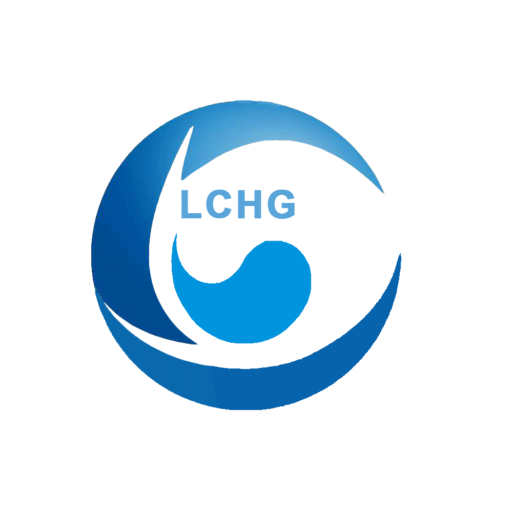二苯甲酮和苯并三唑紫外线吸收剂的光引发剂
各种类型的光稳定剂具有不同的光稳定机制。紫外线吸收剂的保护机制是吸收有害的紫外线辐射,并以热能的形式释放能量,而不会引起光敏现象。uva 除了本身具有足够的紫外线吸收能力外,还应该具有较高的光稳定性。否则,uva 会在不稳定的二次反应中很快被消耗掉。
如左图所示,紫外线吸收剂的明显缺陷是要求被稳定的试样具有一定的厚度,以便紫外线吸收剂获得足够高的吸收率,达到光稳定的目的。因此,紫外线吸收剂如单独用于薄层试样,很难获得理想的光稳定效果,通常需要与其他类型的光稳定剂结合使用。下面我们将讨论常见的紫外线吸收剂类型及其特点。
首先是 2-羟基二苯甲酮类紫外线吸收剂。
如左图所示,2-羟基二苯甲酮衍生物是一类应用相当广泛的紫外线吸收剂,在传统塑料、涂料等聚合物光稳定领域有着较为成熟的应用。这一类紫外线吸收剂一般由 2,4-二羟基二苯甲酮衍生而来。有时,母体化合物还包括 2,2′,4-三羟基二苯甲酮或 2,2′,4,4′-四羟基二苯甲酮不完全醚化衍生物。无论衍生物的结构如何,都需要保留与羰基相邻的羟基,以确保其光稳定效果。2- 羟基二苯甲酮母体本身的最大吸收波长为 260 纳米,没有颜色。但是,2-羟基二苯甲酮的烷氧基取代度越高,吸收波长就可能越高,甚至会呈现黄色。2-hydroxybenzophenone UA 的光稳定机理主要依赖于 2-hydroxy 基团与羰基氧原子之间的氢键作用。其作用过程如下图所示。
当分子吸收紫外线并达到激发态时,羰基氧原子的碱性增强,取代了与之氢键结合的羟基质子,形成烯醇-醌结构。这种结构不稳定,能量以热的形式释放出来,烯醇-醌结构又重新排列回原来的结构,完成了一个保护作用的循环。通过这样的无损伤循环,紫外线损伤被消解,UVA 分子可以再次循环使用。
2-羟基二苯甲酮 UVA 由于结构中含有酚羟基,容易造成光引发自由基聚合阻塞,影响涂料的设计固化。此外,2-羟基二苯甲酮 UVA 结构选择不当或搭配不合理,本身可能起到光敏剂的作用,不仅不能解决紫外线危害,还可能加剧聚合物体系的光老化行为,因此这类 UVA 在光固化涂料体系中的应用应谨慎。
第二,苯并三唑紫外线吸收剂。
苯并三唑(BTZ)类紫外线吸收剂是市场上常见的一种光稳定剂,市场占有率高,应用范围广。其母体化合物为 2-羟基苯基苯并三唑,常见结构如左图所示。
2-hydroxyphenylbenzotriazole 苯环上的 5 位氯取代以及 3′和 5′位上的烷基取代会使吸收光谱最大波长处的吸收峰红移。基态 2-羟基苯基苯并三唑的电子结构更为复杂,可以看作是以下几种共振结构混合的结果。
如上图所示,2-羟基苯基苯并三唑分子吸收光子后,高电子云密度中心从酚氧原子转移到氮原子上,氮原子中心的碱性增强,从酚羟基上夺取质子。光异构化过程大致如左图所示,其作用原理与 2-羟基二苯甲酮非常相似。
立即联系我们!
如果您需要价格,请在下表中填写您的联系信息,我们通常会在 24 小时内与您联系。您也可以给我发电子邮件 info@longchangchemical.com 请在工作时间(UTC+8 周一至周六,上午 8:30 至下午 6:00)或使用网站即时聊天工具获得及时回复。
| 光引发剂 TPO | 化学文摘社编号 75980-60-8 |
| 光引发剂 TMO | cas 270586-78-2 |
| 光引发剂 PD-01 | 化学文摘社编号 579-07-7 |
| 光引发剂 PBZ | 化学文摘社编号 2128-93-0 |
| 光引发剂 OXE-02 | cas 478556-66-0 |
| 光引发剂 OMBB | 化学文摘社 606-28-0 |
| 光引发剂 MPBZ (6012) | CAS 86428-83-3 |
| 光引发剂 MBP | 化学文摘社编号 134-84-9 |
| 光引发剂 MBF | 化学文摘社编号 15206-55-0 |
| 光引发剂 LAP | 化学文摘社编号 85073-19-4 |
| 光引发剂 ITX | CAS 5495-84-1 |
| 光引发剂 EMK | 化学文摘社编号 90-93-7 |
| 光引发剂 EHA | 化学文摘社编号 21245-02-3 |
| 光引发剂 EDB | CAS 10287-53-3 |
| 光引发剂 DETX | 化学文摘社编号 82799-44-8 |
| 光引发剂 CQ / 樟脑醌 | 化学文摘社编号 10373-78-1 |
| 光引发剂 CBP | 化学文摘社编号 134-85-0 |
| 光引发剂 BP / 二苯甲酮 | 化学文摘社编号 119-61-9 |
| 光引发剂 BMS | 化学文摘社 83846-85-9 |
| 光引发剂 938 | 化学文摘社编号 61358-25-6 |
| 光引发剂 937 | CAS 71786-70-4 |
| 光引发剂 819 DW | cas 162881-26-7 |
| 光引发剂 819 | cas 162881-26-7 |
| 光引发剂 784 | cas 125051-32-3 |
| 光引发剂 754 | CAS 211510-16-6 442536-99-4 |
| 光引发剂 6993 | 化学文摘社编号 71449-78-0 |
| 光引发剂 6976 | cas 71449-78-0 89452-37-9 108-32-7 |
| 光引发剂 379 | cas 119344-86-4 |
| 光引发剂 369 | cas 119313-12-1 |
| 光引发剂 160 | 化学文摘社编号 71868-15-0 |
| 光引发剂 1206 | |
| 光引发剂 1173 | 化学文摘社编号 7473-98-5 |
